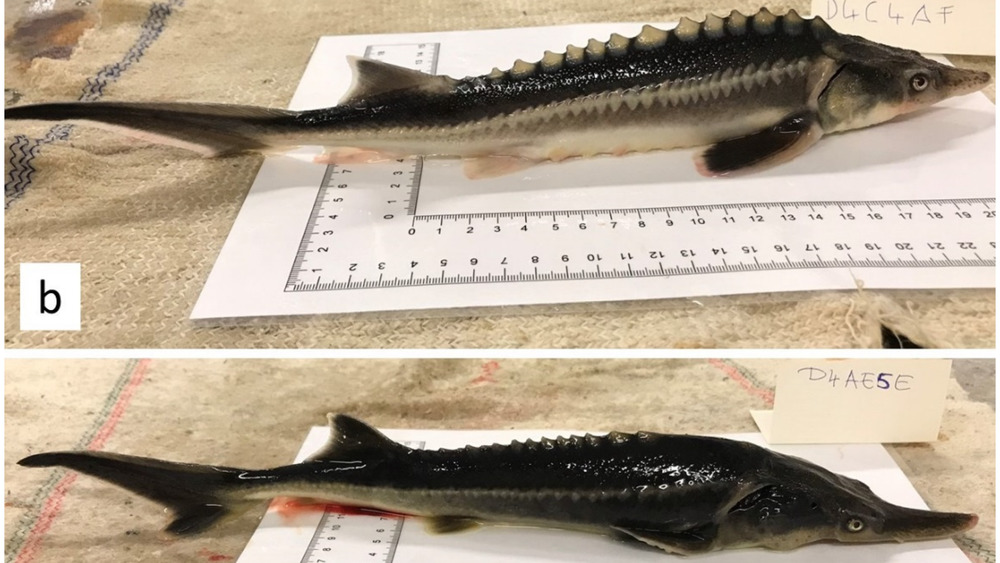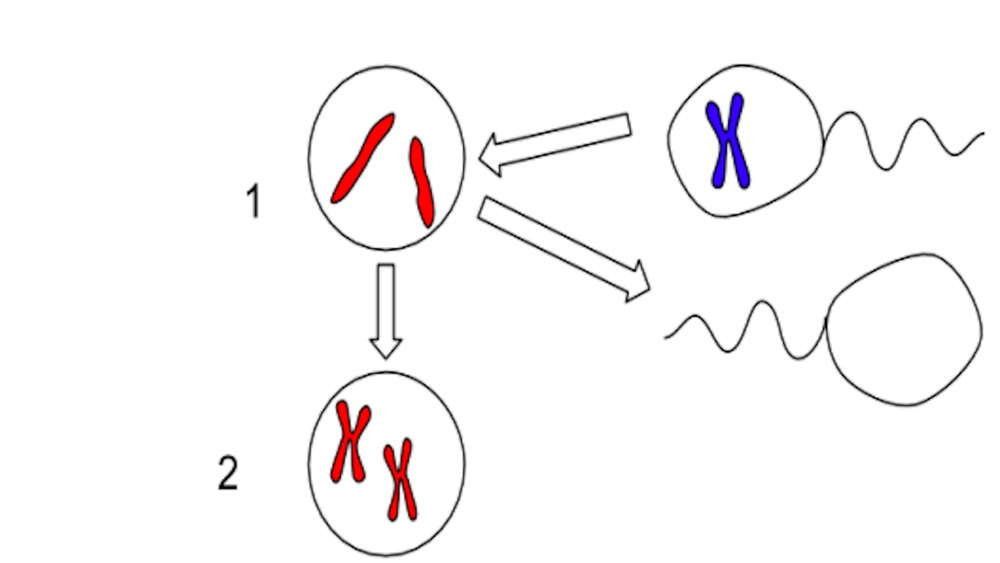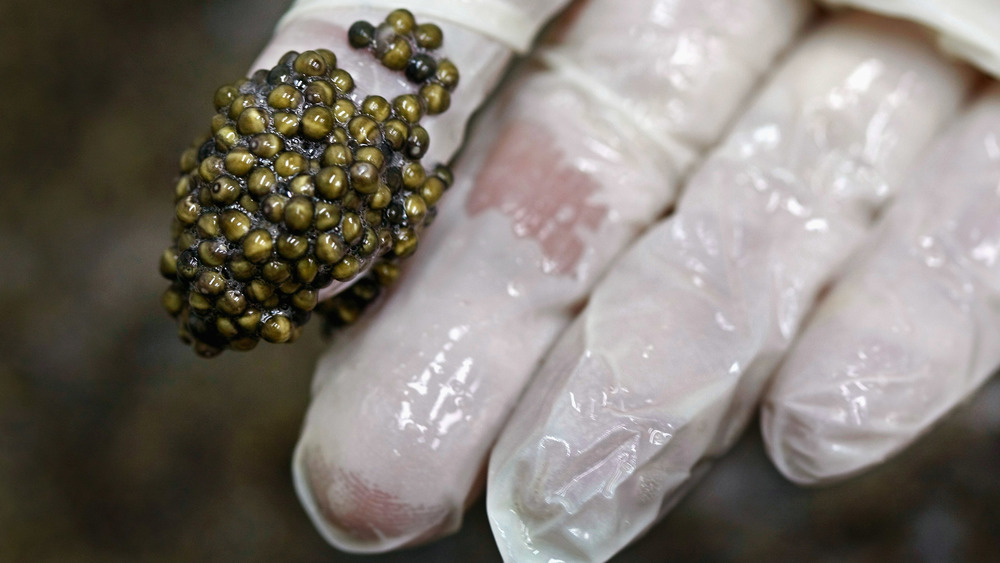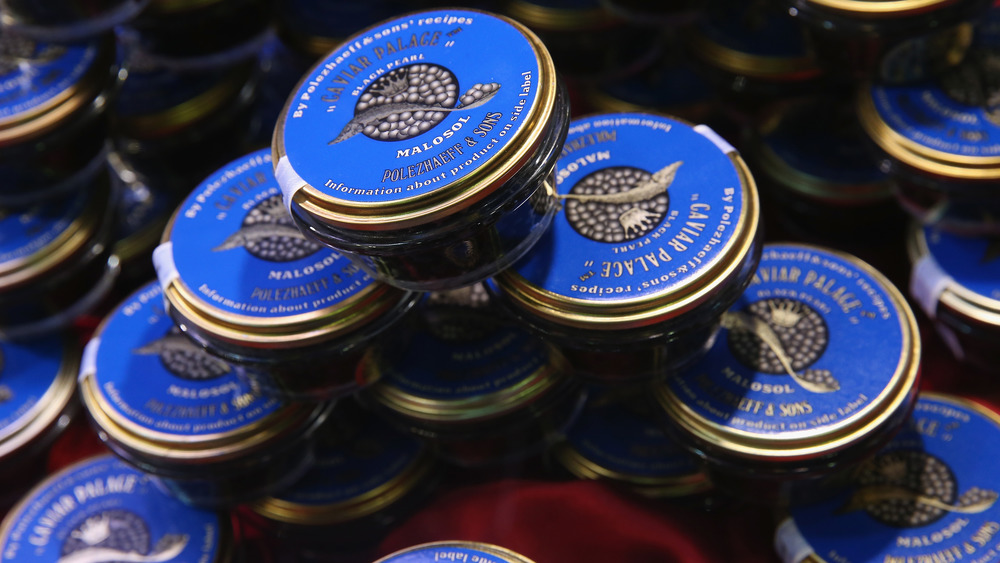How Scientists Accidentally Created A Hybrid Fish
As we know by now, life always finds a way. And that's exactly what happened when, as CNN reports, scientists tried to reproduce Russian sturgeon eggs through gynogenesis, using paddlefish sperm. Rather than reproducing asexually, the sturgeon eggs combined with the paddlefish sperm to create a hybrid sturddlefish, an event, says a paper posted at MDPI, that was completely unanticipated by scientists.
And there isn't even just one kind of hybrid. Two different kinds of sturddlefish emerged out of the hybridization, both bearing different resemblances to their parents.
Currently, scientists aren't exactly sure what to do with the sturddlefish. Since they're likely to be sterile like other hybridizations, they won't affect the endangered nature of the sturgeon or the paddlefish. And for now, as Smithsonian reports, scientists have no plans to make more, although they didn't even plan on making the ones they've got. For now, the sturddlefish remain in Hungary, their birthplace, while scientists continue to study their accidental creation. Here's how scientists accidentally created a hybrid fish.
What scientists were trying to do
Initially, scientists had wanted to use gynogenesis – "a form of all female inheritance," says Science Direct — in order to reproduce Russian sturgeon eggs. A form of parthenogenesis, which, as Britannica explains, involves asexual reproduction, in gynogenesis, all of the genetic material comes from the egg and merely introducing sperm into the environment near the eggs will cause the eggs to develop, without any actual fertilization by the sperm.
In 2014, per an article at the National Library of Medicine, gynogenesis had been used successfully on the eggs of a ship sturgeon with the sperm of a Siberian sturgeon. As a group of species, relates the International Union for the Conservation of Nature, sturgeons are the most critically endangered compared to any other, which is primarily why scientists are trying to use gynogenesis to increase their population.
According to Smithsonian Magazine, this is what scientists attempted to do with the Russian sturgeon eggs and paddlefish sperm. Although the sperm was irradiated in one of the experiments, it was left undamaged in another. Previous failed attempts at hybridization had led scientists to believe that hybridization was simply not possible between the two fish. But then, says the article at MDPI, one of the control groups with non-irradiated sperm suddenly produced a group of viable hybrids.
Accidentally making a Sturddlefish
This definitely wasn't supposed to happen. Smithsonian quotes Miklós Bercsényi, an aquaculture geneticist: "This hybrid should die [...] The embryonic development should not happen." Instead, about two-thirds of the hybrid school survived the first month, and as of July 2020, over 100 are still living, reports The New York Times.
Not only was this incredibly unexpected from a genetic point of view, but this would never have happened in the wild. The two fish live "on opposite sides of the globe" and with different habits and feeding habits, it's questionable whether or not they would've crossed paths in the wild. However, according to CNN, since both fish belong to the Acipenseriformes group, their genetics aren't so different.
In the end, two kinds of hybrids were born. "One of them is one part paddlefish, two parts sturgeon, and the other is one part paddlefish, four parts sturgeon," says CNN. While one of the hybrids has a pointier face, similar to the paddlefish, both hybrids have a version of the sturgeon's ridged back.
Will there be more sturddlefish?
Man-man hybrids, like mules and bananas, are typically infertile, says Frontiers for Young Minds, and scientists believe that the sturddlefish will be as well. Ligers, however, have been known to produce offspring, as Britannica reports, so the fate of the sturddlefish remains to be seen.
According to Smithsonian Magazine, however, one of the incentives for breeding more Russian sturgeons comes from the fact that they supply the world with most of its caviar. Infertile hybrids don't provide the caviar industry with what it desires. As a result, scientists "don't plan to make more." But since the sturddlefish was created entirely by accident, clearly plans don't always go accordingly.
According to the MDPI article, scientists believe that if the hybrids follow the feeding habits of their paddlefish parent, then they can "play an important role in adapting pond aquaculture to the challenges of climate change." And, according to CNN, with the potential that feeding sturddlefish may produce less carbon emissions, these "accidental hybrids could end up being more valuable than their creators imagined."
For the time being, the hybrids will remain in the research facility in Hungary where they were born, "where there's no risk they'll invade non-native waters."



